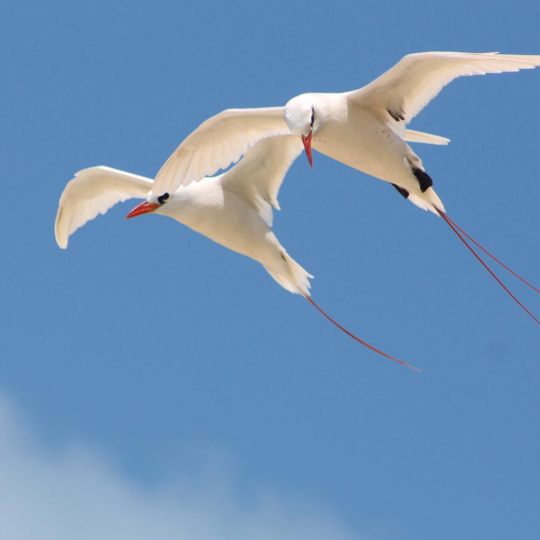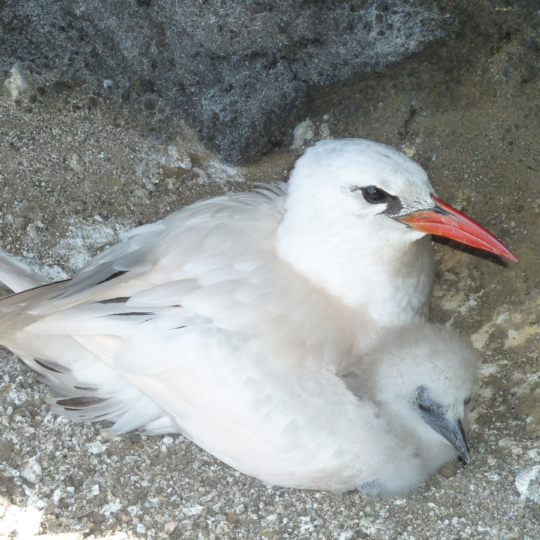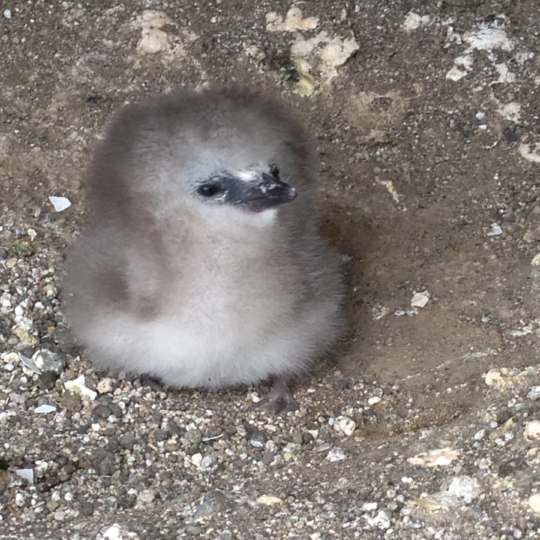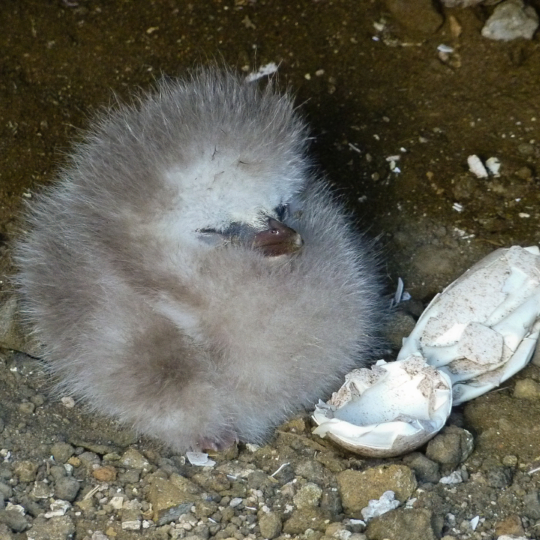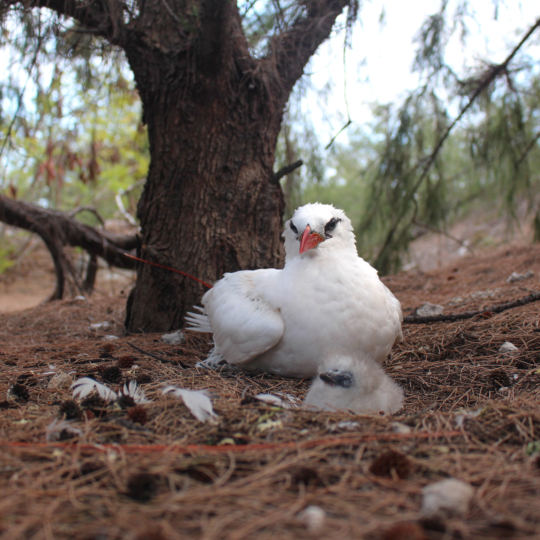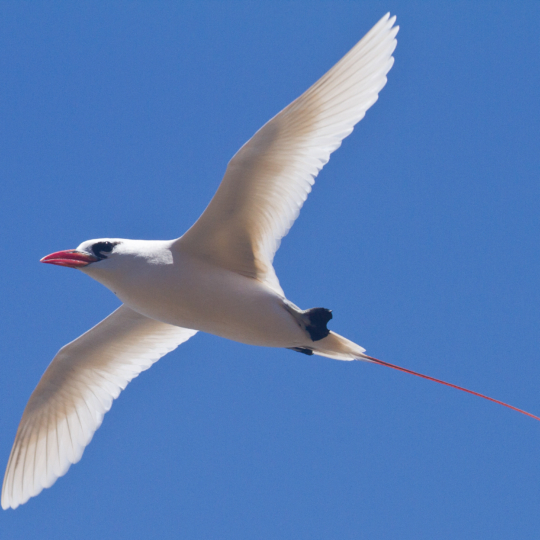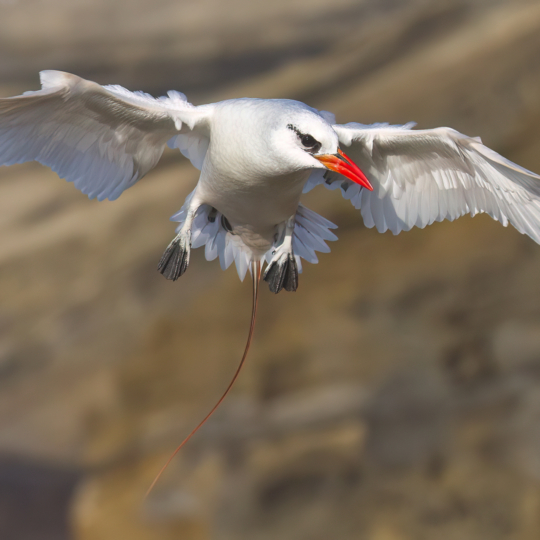Red-tailed Tropicbird
Click on any image to enlarge it
Status: IUCN Least Concern
Scientific Name: Phaethon rubricauda
Hawaiian Name: Koaʻe ʻula
Family: Phaethontidae
Population: 9,000-12,000 in Hawai’i. 70,000 total globally.
Feeding: Red-tailed tropicbirds forage by plunge diving. Their main prey is flyingfish, but they also feed on squid, mackerel scad, dolphinfish, truncated sunfish, and balloonfish.
Breeding: Although breeding is asynchronous, it peaks in Hawai’i from March-October. Pairs engage in complex aerial courtship displays, most easily observed at mid-day. Nests are typically a simple scrape on the ground, sometimes lined with vegetation. Only 1 egg is laid at a time, but a pair may re-lay if their egg fails. On O’ahu the mean breeding cycle length is 126.7 days.
Life Cycle: Breeding begins at 2-4 years of age and the oldest known individual was 23 years old.
Taxonomic Information: Red-tailed tropicbirds are one of three species in the Phaethontidae family. It is most closely related to the White-tailed tropicbird, or Koa’e kea.
Threats and Conservation: Like other ground-nesting seabirds in Hawai’i, Red-tailed tropicbirds are vulnerable to predation by invasive mammalian predators such as rats, cats, and mongooses. Conducting predator control efforts near colonies is a proven method to increase nest survival and colony size.
PRC and RTTR: Since 2005 PRC has monitored the reproductive success of a Red-tailed tropicbird colony at Ha¯lona Point on O’ahu, and controlled non-native predators in the area to protect nests. From 2005-2020 these predator control efforts resulted in an overall colony growth rate of 520%. Additionally, in 2022-2023 PRC has monitored the reproductive success of Red-tailed tropicbirds at Kilauea Point National Wildlife Refuge on Kaua’i.Sources: BirdLife International (2023) Species factsheet: Phaethon rubricauda. Downloaded from http://datazone.birdlife.org/species/factsheet/red-tailed-tropicbird-phaethon-rubricauda on 15/09/2023.
Felis, J.J., Kelsey, E.C., Adams, J., Stenske, J.G., and White, L.M., 2020, Population estimates for selected breeding seabirds at Kīlauea Point National Wildlife Refuge, Kauaʻi, in 2019: U.S. Geological Survey Data Series 1130, 32 p., https://doi.org/10.3133/ds1130.
U.S. Fish and Wildlife Service. 2005. Regional seabird conservation plan, Pacific Region. U.S. Fish and Wildlife Service, Migratory Birds and Habitat Programs, Pacific Region. Portland, (OR): U.S. Fish and Wildlife Service.
VANDERWERF, E.A. 2021. Status and monitoring methods of a Red-tailed Tropicbird colony on O’ahu, Hawai’i. Marine Ornithology 49: 215-222.
